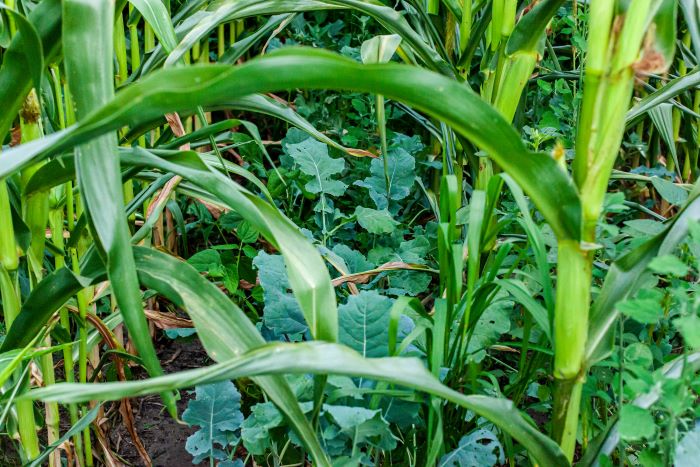
Regenerative agriculture was originally coined back in the 1970s and remained a relatively niche term until 2015. Over the past decade, there has been a sharp rise and interest in supporting farmers that implement regenerative agricultural practices to improve food quality, improve rural communities and address climate concerns. The most basic way to think about it is creating the conditions for the soil’s ability to regenerate and the impact that has on us, our food and our communities. There are plenty of articles, research papers, movies and books covering the topic. Interestingly, I’ve observed that irrigation is not one of the main practices that tends to be discussed when it comes to regenerative agriculture. Yet how a farm chooses to irrigate can support multiple regenerative practices, and in fact, irrigation choice can be at the center of such practices.
The principles of regenerative agriculture and precision irrigation are interconnected. Precision irrigation efficiently delivers water and nutrients directly to the root zone, reinforcing the fundamental concept of regenerative agriculture. Microirrigation systems support soil health, no or low till, cover cropping, biodiversity, watershed health, intercropping and agroforestry, and climate mitigation.
Maintaining soil moisture at an optimum level keeps the soil microbiome active and diverse. Providing the exact and correct amount of nutrients and water at the plant’s root zone supports microbial activity, sustaining soil fertility and health. Organic-based fertilizers and soil amendments can be easily applied through microirrigation systems, furthering soil biodiversity. Buried microirrigation systems allow for a significant reduction in tillage or furrowing, minimizing soil disturbance and preserving soil structure. Cover cropping practices are easier to maintain, which also contributes to soil revitalization, improved pest and disease control, improved wildlife habitat and water quality. Crop diversity or agroforestry practices are also more efficiently supported through microirrigation systems. These systems reduce water withdrawals and minimize runoff, helping to maintain higher water levels in water scarce areas and improving water quality by reducing nutrient leaching to waterways – both of which contribute to overall watershed health. Soil erosion is reduced, and soil stability improves by delivering nutrients to their intended recipient – the crop roots.
Farmers may choose to adopt regenerative practices for a multitude of reasons, from economic to environmental. Economically speaking, reducing input costs with fertilizers, pesticides, fuel or lower labor and equipment costs with no or reduced till systems can lower costs. Farmers may boost revenue from crop diversification or tapping into ecosystem service payments. Not surprisingly, while these choices may be made for economic reasons, the outcomes can preserve their land for future generations by regenerating degraded soils that have not been able to remain resilient under conventional management. Companies like General Mills, Nestle and Danone are sourcing from regenerative farms, and farmers may also access premium pricing, preferential supply contracts or sustainability certifications. Even if a farmer is primarily motivated to adopt regenerative practices for economic reasons, there are myriad environmental benefits, and often these benefits are what drives payments for such practices. Environmentally, better soil infiltration reduces runoff and erosion, allowing the soils to retain more water which is critical both in drought and flood conditions, while also supporting groundwater recharge and improving downstream water quality.
There are public and private-based incentives for farmers to adopt practices that have been deemed regenerative. At a recent “Make America Healthy Again” roundtable, Secretary of Agriculture Brooke Rollins emphasized a shift toward voluntary, non-coercive transitions to practices like regenerative agriculture. Rollins has framed regenerative agriculture as a farmer-led, sustainable evolution, spotlighting soil health and topsoil preservation as key to long-term farm viability. Tying regenerative practice outcomes to climate benefits, however, has resulted in some federal funding programs such as the USDA’s Partnership for Climate Smart Commodities, to be paused or cancelled. The Sustainable Agriculture Research and Education (SARE) program is a federally sponsored program that remains strong as it focuses on research, profitability, yield increases and input reduction – all of which are outcomes from regenerative practices.
Farmers interested in incentive payments for adopting regenerative agricultural practices may find more funding resources at the state level or from corporations. Microbial diversity is correlated with greater soil organic carbon accumulation, and this is one of the many reasons most major food companies have established regenerative agriculture goals. Certain practices have been demonstrated to show measurable environmental outcomes that companies can claim against sustainability goals. These include sequestering carbon through root biomass and stable soil carbon pools and reducing nitrous oxide and/or methane emissions from optimized nutrient cycling. Here are examples of private sector programs:
Whether driven by a commitment to long-term land stewardship or a need for greater resilience, farmers exploring regenerative practices have strong momentum behind them. And increasingly, it’s irrigation decisions that can anchor those transitions.
Share on social media:
8280 Willow Oaks Corporate Drive | Suite 630 | Fairfax, VA 22031
Tel: 703.536.7080 | Fax: 703.536.7019
HOME | ABOUT US | ADVERTISE | SUBSCRIBE | CONTACT | PRIVACY POLICY | IA ANTITRUST STATEMENT